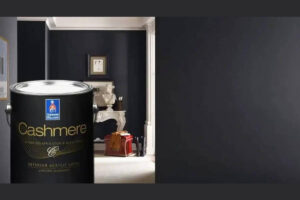Bath and Body Works, a popular retailer known for its scented candles and body care products, offers a wide range of candle scents that can make your home smell inviting and pleasant. Many cat owners, however, have concerns about the safety of using scented candles around their feline companions. In this comprehensive guide, we’ll explore whether Bath and Body Works candles are safe for cats and provide insights into potential risks and precautions.
Understanding the Concerns
Cats have a highly developed sense of smell, and the chemicals used in scented candles can potentially affect them in several ways. Here are some common concerns:
Inhalation:
Cats have sensitive respiratory systems. Inhaling the fragrance and chemicals released by scented candles could lead to respiratory issues, especially if your cat has preexisting respiratory conditions.
Skin Contact:
Cats may come into contact with candles, wax, or essential oils when they explore or jump on surfaces. Skin contact with candle wax or essential oils could lead to skin irritation or allergies.
Ingestion:
Curious cats may occasionally lick or nibble on objects, including candles. Ingesting candle wax or scents can lead to gastrointestinal upset and toxicity.
Bath and Body Works Candle Ingredients
Bath and Body Works candles typically list their ingredients, which may include a blend of wax, fragrance oils, essential oils, and dyes. While the specific formulation may vary between candle scents, the ingredients are generally safe for human use. However, the impact on cats can differ.
Evaluating Candle Safety for Cats
To determine whether Bath and Body Works candles are safe for cats, consider the following factors:
Choose Unscented Candles:
If you want to play it safe, opt for unscented candles. These candles don’t release fragrance, reducing the risk of respiratory issues.
Natural Ingredients:
Some candles use natural, non-toxic ingredients. Look for candles with ingredients that are less likely to harm your cat, but be cautious and monitor your cat’s reactions.
Candle Placement:
Keep candles out of your cat’s reach. Place them in areas that your cat cannot access, and never leave lit candles unattended.
Closely Monitor Your Cat:
Pay attention to your cat’s behavior when candles are present. If you notice signs of discomfort, such as sneezing, coughing, excessive scratching, or avoidance of the area, it may be best to avoid scented candles.
Consult Your Veterinarian:
If your cat has preexisting respiratory conditions or allergies, consult your veterinarian before using scented candles.

Alternatives to Scented Candles
If you’re concerned about the safety of scented candles around your cat, there are alternative ways to create a pleasant ambiance in your home:
Pet-Friendly Scents:
Explore pet-safe alternatives, such as pet-safe air fresheners, diffusers with pet-friendly essential oils, or natural room sprays that are formulated to be safe for pets.
Open Windows:
Ventilation can help improve the air quality in your home naturally.
Regular Cleaning:
Keeping your home clean and litter boxes well-maintained can contribute to a fresher-smelling environment.
Aromatherapy for Cats:
Some pet owners use feline-specific aromatherapy products, but always consult your veterinarian before introducing any new scents to your cat.
In Conclusion
The safety of Bath and Body Works candles for cats depends on various factors, including your cat’s individual sensitivities and the specific candle ingredients. It’s crucial to monitor your cat’s behavior and consult your veterinarian if you have concerns about using scented candles around your feline friend. Ultimately, the well-being and comfort of your cat should be your top priority, and there are many pet-friendly alternatives to explore for creating a pleasant environment in your home.
Monitoring Your Cat’s Reaction
Closely observing your cat’s behavior is crucial when you introduce scented candles or any new elements into your home environment. Here are some indicators to watch for:
Respiratory Symptoms:
Keep an eye out for signs of respiratory distress, such as sneezing, coughing, or wheezing. If you notice these symptoms, it may be best to remove the scented candles from your cat’s proximity.
Allergic Reactions:
Cats with sensitivities may develop skin issues, such as redness, itching, or rashes, upon contact with candle wax or essential oils. If you see any skin problems, discontinue the use of scented candles.
Behavioral Changes:
Monitor your cat’s overall behavior. Some cats may become agitated or avoid areas where scented candles are placed. If your cat appears uncomfortable, it’s wise to take the necessary precautions.
Ingestion:
Ensure your cat doesn’t attempt to lick or chew on candles. Ingesting wax or scents can lead to gastrointestinal upset, and in severe cases, toxicity. Keep candles out of reach and consider using protective covers when not in use.
Pet-Safe Alternatives
If you remain concerned about the impact of scented candles on your cat, explore pet-safe alternatives to maintain a pleasant atmosphere in your home:
Pet-Friendly Air Fresheners:
Look for air fresheners specifically labeled as pet-friendly or natural. These products are formulated to be safe for both you and your cat.
Pet-Friendly Diffusers:
Consider using diffusers that utilize pet-safe essential oils or are designed for use in households with animals.
Natural Room Sprays:
Explore natural room sprays that contain plant-based ingredients and are free from toxic chemicals. These can help keep your home smelling fresh.
Open Windows:
Ventilation is an effective way to improve air quality in your home naturally. Regularly opening windows can help remove odors and provide a breath of fresh air.
Regular Cleaning:
Maintaining a clean home, including regular litter box cleaning, can contribute to a more pleasant-smelling environment.
Consult Your Veterinarian:
If you’re interested in using aromatherapy for your cat, consult your veterinarian for guidance on safe and suitable products for your specific pet.
In conclusion, while the use of scented candles, including Bath and Body Works candles, can add a pleasant aroma to your home, it’s crucial to consider your cat’s safety and well-being. Individual sensitivities can vary, and it’s essential to monitor your cat’s reaction when introducing scented candles or other scented products into your living space. If you have concerns or your cat displays any signs of discomfort, it’s wise to explore pet-friendly alternatives and prioritize your feline companion’s comfort and health.
Certainly, here are some frequently asked questions (FAQs) regarding the safety of Bath and Body Works candles for cats:
FAQS
1. Are Bath and Body Works candles safe for cats?
The safety of Bath and Body Works candles for cats can vary based on your cat’s individual sensitivities and the specific candle ingredients. It’s important to monitor your cat’s reaction and behavior when using scented candles and take precautions to ensure their well-being.
2. What are the potential risks of using scented candles around cats?
Risks may include respiratory distress, skin irritation, allergies, and gastrointestinal upset if a cat ingests candle wax or essential oils. Cats with preexisting respiratory conditions or sensitivities may be more vulnerable.
3. Can I use unscented candles around cats?
Unscented candles are generally a safer option as they don’t release fragrance. However, it’s still important to monitor your cat’s behavior and take precautions to prevent contact with hot wax.
4. How can I tell if my cat is having a negative reaction to scented candles?
Signs of a negative reaction may include respiratory symptoms (sneezing, coughing), skin issues (redness, itching), behavioral changes (agitation, avoidance), or signs of wax ingestion. If you notice any concerning symptoms, discontinue the use of scented candles and consult your veterinarian.
5. Are there pet-safe alternatives to scented candles?
Yes, there are pet-safe alternatives, including pet-friendly air fresheners, diffusers with pet-safe essential oils, natural room sprays, ventilation through open windows, and regular cleaning to maintain a fresh-smelling environment.
6. Can I use candles with natural ingredients around cats?
Candles with natural, non-toxic ingredients may be a safer choice, but it’s crucial to closely monitor your cat’s reaction and ensure that the ingredients used are genuinely safe for your pet.
It’s important to prioritize your cat’s safety and well-being when using scented candles and to be vigilant in assessing their response to these products. The individual sensitivities of cats can vary, so always take precautions to ensure a comfortable and safe environment for your feline companion.



